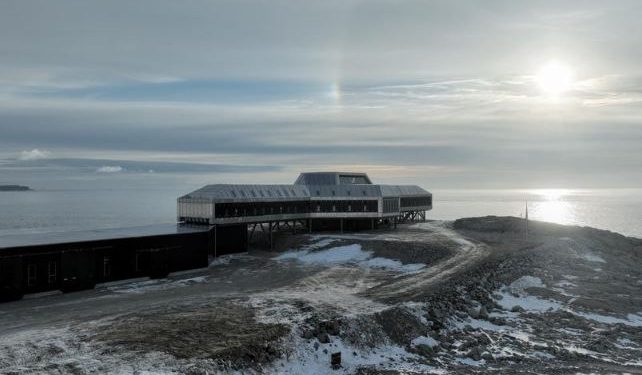Beijing: China opened its fifth research station in Antarctica Wednesday amid concerns over its location suited to collect signals “intelligence” from US-allied Australia and New Zealand, especially the rocket telemetry data from Australia’s new Arnhem Space Centre.
Chinese President Xi Jinping in a congratulatory message to the newly built station called Qinling said China’s polar research cause has achieved fruitful results with its launch.
Extending Chinese New Year greetings to the scientists, Xi said the completion of the building of the Qinling Station will provide a strong guarantee for scientists in China and around the world to continue to explore the mysteries of nature and bravely ascend the peak of science.
The station was established along the coastal areas of the Ross Sea in Antarctica, state-run Xinhua reported earlier.
The new station building will have a floor space of 5,244 square meters. It will be able to support 80 expedition team members during summers and 30 members during winters, according to the report.
The location of the station however aroused concerns as it could also be used to enhance the country’s intelligence collection, the Washington-based Centre for Strategic and International Studies (CSIS) said in a report last year.
Attention has turned to the potential dual-use of China’s facilities amid increasing power competition with the United States and Western concerns about Beijing’s assertive foreign policy and surveillance capabilities, it said.
The new station’s position, on Inexpressible Island near the Ross Sea, is triangulated with China’s other coastal stations on Antarctica to “fill in a major gap in China’s coverage” of the continent, and could support intelligence collection given its inclusion of a satellite ground station, the report quoted by CNN said.
The station’s position may enable China to “collect signals intelligence from US-allied Australia and New Zealand” and “collect telemetry data on rockets launching from newly established space facilities in both countries,” it said.
Once completed, the 5,000-square-meter (53,820-square-foot) station is expected to include a scientific research and observation area, an energy facility, a main building, a logistics facility, and a wharf for China’s Xuelong icebreakers, according to CSIS.
Asked for his reaction, Chinese Foreign Ministry spokesman Wang Wenbin told a media briefing here on Wednesday that the station is in full compliance with international Antarctic rules and procedures.
The construction of China’s Antarctic station will help enhance scientific understanding of Antarctica for humanity, provide a platform for cooperation in Antarctic scientific expeditions between China and other countries, and promote peace and sustainable development in Antarctica, he said.
Last November, China dispatched a new Antarctic scientific expedition team consisting of over 450 personnel to build its fifth research station to firm up its presence in the icy and resource-rich southernmost continent.
The new station building will have a floor space of 5,244 square meters. It will be able to support 80 expedition team members during summers and 30 members during winters, according to a state-run Xinhua report.
The station will monitor and study the atmospheric and marine environment of Antarctica as well as the biological and ecological conditions there, the report said.
There are currently 70 permanent research stations scattered across the continent of Antarctica, which represent 29 countries from every continent on Earth, according to media reports.
The Indian Antarctic programme, which began in 1981, has completed 40 scientific expeditions and built three permanent research base stations in Antarctica — Dakshin Gangotri (1983), Maitri (1988), and Bharati (2012).
Currently, Maitri and Bharati are fully operational.
The US has six stations and Australia has three.
China signed the Antarctic Treaty in 1983. The treaty designates the continent as a natural reserve and prohibits commercial resource extraction.
PTI







































